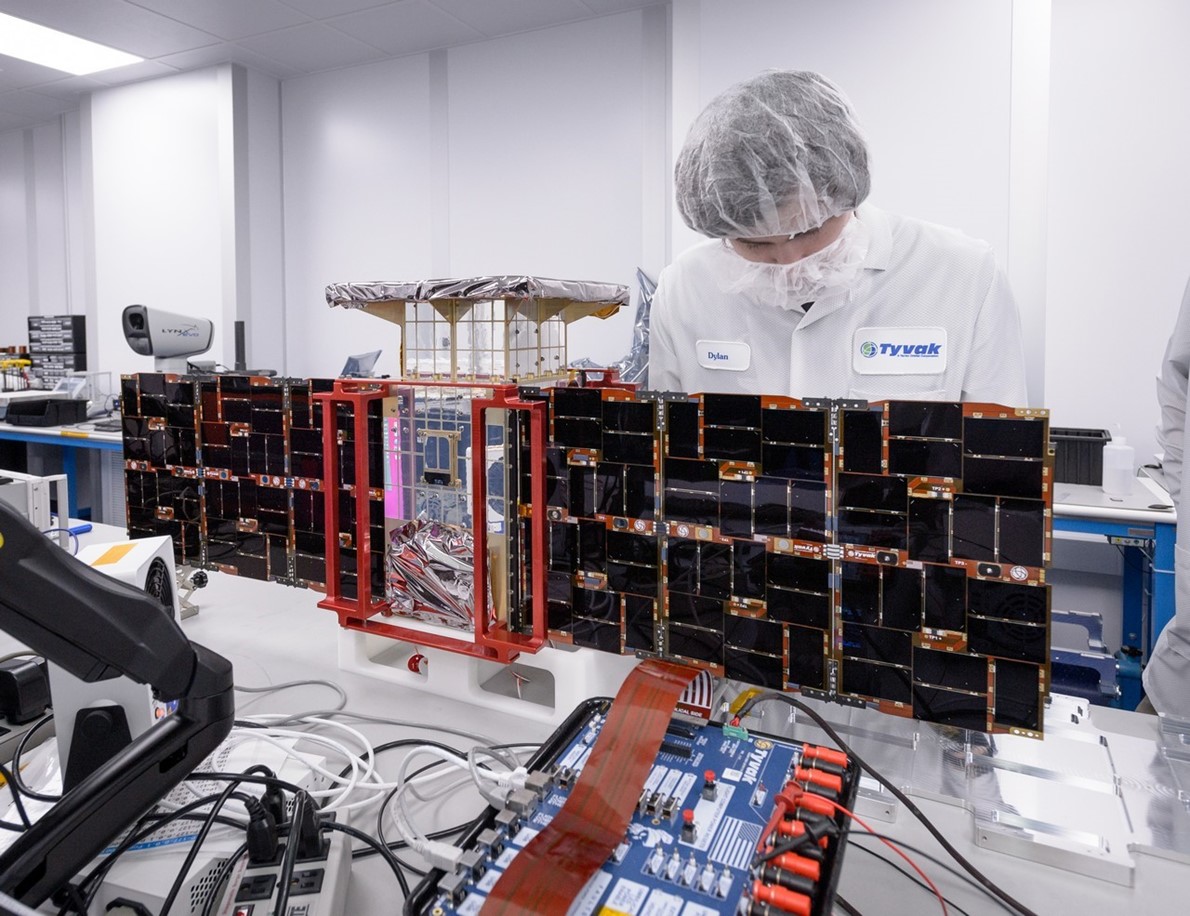In the
coming years,
NASA will be busy at the moon.
اضافة اعلان
A giant rocket
will loft a capsule with no astronauts aboard around the moon and back, perhaps
before the end of summer. A parade of robotic landers will drop off experiments
on the moon to collect reams of scientific data, especially about water ice
locked up in the polar regions. A few years from now, astronauts could return
there, more than a half-century since the last Apollo moon landing.
Those are all
part of NASA’s 21st-century moon program named for Artemis, who in Greek
mythology was the twin sister of Apollo.
Early Monday, a
spacecraft named CAPSTONE is scheduled to launch as the first piece of Artemis
to head to the moon. Compared to what is to follow, it is modest in size and
scope.
There will not
be any astronauts aboard CAPSTONE. The spacecraft is too tiny, about as big as
a microwave oven.
This robotic
probe won’t land on the moon. But it is in many ways unlike any previous
mission to the moon. It could serve as a template for public-private
partnerships that NASA could undertake in the future to get a better bang for
its buck on interplanetary voyages.
“NASA has gone
to the moon before, but I’m not sure it’s ever been put together like this,”
said Bradley Cheetham, CEO and president of Advanced Space, the company that is
managing the mission for NASA.
Coverage of the
launch will be begin at 5am Eastern time Monday on NASA Television. The rocket
has to launch at an exact moment, at 5:50am, for the spacecraft to be lofted to
the correct trajectory.
 An undated photo by Dominic Hart/NASA of Dylan Schmidt, the CAPSTONE spacecraft’s assembly integration and test lead, installing its solar panels at Tyvak Nano-Satellite Systems.
An undated photo by Dominic Hart/NASA of Dylan Schmidt, the CAPSTONE spacecraft’s assembly integration and test lead, installing its solar panels at Tyvak Nano-Satellite Systems.
The full name of
the mission is the Cislunar Autonomous Positioning System Technology Operations
and Navigation Experiment. It will act as a scout for the lunar orbit where a
crewed space station will eventually be built as part of Artemis. That outpost,
named Gateway, will serve as a way station where future crews will stop before
continuing on to the lunar surface.
CAPSTONE is unusual for NASA in several ways. For
one, it is sitting on a launchpad not in Florida but in New Zealand. Second,
NASA did not design or build CAPSTONE, nor will it operate it. The agency does
not even own it. CAPSTONE belongs to Advanced Space, a 45-employee company on
the outskirts of Denver.
The spacecraft
is taking a slow but efficient trajectory to the moon, arriving November 13. If
weather or a technical problem causes the rocket to miss that instantaneous
launch moment, there are additional chances through July 27. If the spacecraft
gets off the ground by then, it will still get to lunar orbit on the same day:
November 13.
The CAPSTONE
mission continues efforts by NASA to collaborate in new ways with private companies
in hopes of gaining additional capabilities at lower cost more quickly.
“It’s another
way for NASA to find out what it needs to find out and get the cost down,” said
Bill Nelson, NASA’s administrator.
Advance Space’s
contract with NASA for CAPSTONE, signed in 2019, cost $20 million. The ride to
space for CAPSTONE is small and cheap too: just under $10 million for a launch
by Rocket Lab, a US-New Zealand company that is a leader in delivering small
payloads to orbit.
“It’s going to
be under $30 million in under three years,” said Christopher Baker, program
executive for small spacecraft technology at NASA. “Relatively rapid and
relatively low cost.”
Even Beresheet,
a shoestring effort by an Israeli nonprofit to land on the moon in 2019, cost
$100 million.
“I do see this
as a pathfinder for how we can help facilitate commercial missions beyond
Earth,” Baker said.
The primary
mission of CAPSTONE is to last six months, with the possibility of an
additional year, Cheetham said.
The data it
gathers will aid planners of the lunar outpost known as Gateway.
When
then-president Donald Trump declared in 2017 that a top priority for his
administration’s space policy was to send astronauts back to the moon, the
buzzwords at NASA were “reusable” and “sustainable.”
That led NASA to
make a space station around the moon a key piece of how astronauts would get to
the lunar surface. Such a staging site would make it easier for them to reach
different parts of the moon.
The first
Artemis landing mission, which is scheduled for 2025 but likely to be pushed
back, will not use Gateway. But subsequent missions will.
NASA decided
that the best place to put this outpost would be in what is known as a
near-rectilinear halo orbit.
Halo orbits are
those influenced by the gravity of two bodies — in this case, the
Earth and the
moon. The influence of the two bodies helps make the orbit highly stable,
minimizing the amount of propellant needed to keep a spacecraft circling the
moon.
The
gravitational interactions also keep the orbit at about a 90-degree angle to
the line-of-sight view from Earth. (This is the near-rectilinear part of the
name.) Thus, a spacecraft in this orbit never passes behind the moon where
communications would be cut off.
The orbit that
Gateway will travel comes within about 3,540km of the moon’s North Pole and
loops out as far as 70,811km away as it goes over the South Pole. One trip
around the moon will take about a week.
In terms of the
underlying mathematics, exotic trajectories like a near-rectilinear halo orbit
are well understood. But this is also an orbit where no spacecraft has gone
before.
Thus, CAPSTONE.
Read more Odd and Bizarre
Jordan news



